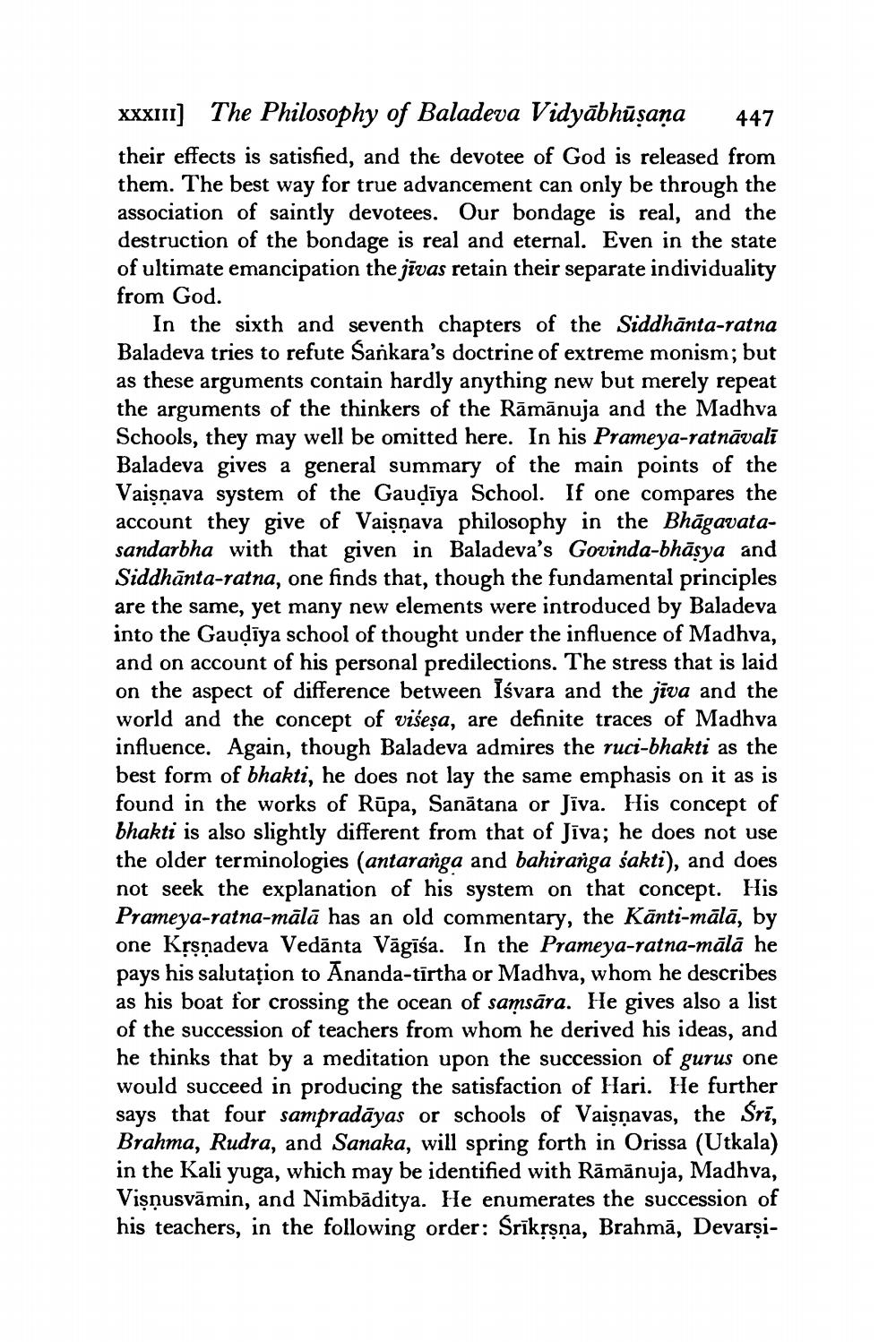________________
XXXIII) The Philosophy of Baladeva Vidyābhūsana 447 their effects is satisfied, and the devotee of God is released from them. The best way for true advancement can only be through the association of saintly devotees. Our bondage is real, and the destruction of the bondage is real and eternal. Even in the state of ultimate emancipation the jīvas retain their separate individuality from God.
In the sixth and seventh chapters of the Siddhānta-ratna Baladeva tries to refute Sankara's doctrine of extreme monism; but as these arguments contain hardly anything new but merely repeat the arguments of the thinkers of the Rāmānuja and the Madhva Schools, they may well be omitted here. In his Prameya-ratnāvalī Baladeva gives a general summary of the main points of the Vaişnava system of the Gaudīya School. If one compares the account they give of Vaişnava philosophy in the Bhāgavatasandarbha with that given in Baladeva's Govinda-bhāsya and Siddhānta-ratna, one finds that, though the fundamental principles are the same, yet many new elements were introduced by Baladeva into the Gaudīya school of thought under the influence of Madhva, and on account of his personal predilections. The stress that is laid on the aspect of difference between Isvara and the jīva and the world and the concept of viseșa, are definite traces of Madhva influence. Again, though Baladeva admires the ruci-bhakti as the best form of bhakti, he does not lay the same emphasis on it as is found in the works of Rūpa, Sanātana or Jīva. His concept of bhakti is also slightly different from that of Jiva; he does not use the older terminologies (antaranga and bahiranga sakti), and does not seek the explanation of his system on that concept. His Prameya-ratna-mālā has an old commentary, the Kānti-mālā, by one Krsnadeva Vedānta Vāgīša. In the Prameya-ratna-mālā he pays his salutation to Ananda-tīrtha or Madhva, whom he describes as his boat for crossing the ocean of samsāra. He gives also a list of the succession of teachers from whom he derived his ideas, and he thinks that by a meditation upon the succession of gurus one would succeed in producing the satisfaction of Hari. He further says that four sampradāyas or schools of Vaişnavas, the Srī, Brahma, Rudra, and Sanaka, will spring forth in Orissa (Utkala) in the Kali yuga, which may be identified with Rāmānuja, Madhva, Vişnusvāmin, and Nimbāditya. He enumerates the succession of his teachers, in the following order: Śrīkrsna, Brahmā, Devarși




